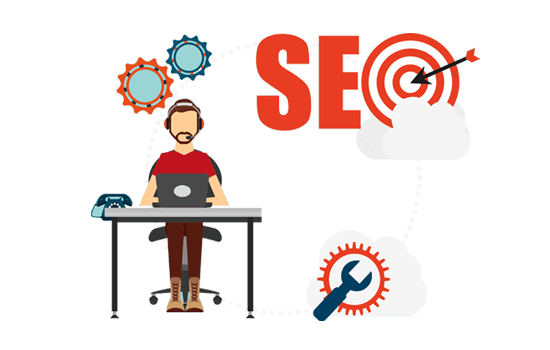The Ultimate Guide to SEO

1. Introduction to SEO
Search Engine Optimization (SEO) is a strategy used to enhance the visibility and ranking of a website in search engine result pages (SERPs). This involves optimizing various aspects of a website, including content, meta tags, backlinks, and other important factors. The ultimate goal of SEO is to increase organic traffic to a website from search engines. SEO is crucial for businesses and organizations to establish an online presence and attract potential customers.

2. Understanding Search engine
A search engine is a software program that searches a database of web pages to find results that match a user’s query. The most widely used search engines are Google, Bing, and Yahoo. Search engines use algorithms to evaluate and rank web pages based on various factors, including relevance, quality, and popularity. Understanding how search engines work is essential for optimizing websites for better visibility and ranking on search engine result pages. SEO techniques are used to improve a website’s ranking on search engines and increase organic traffic.

3. Keyword Research
Keyword research is an essential part of Search Engine Optimization (SEO) that involves analyzing and identifying the most frequently used search terms and phrases that people use on search engines. By conducting keyword research, businesses gain a deeper understanding of their target audience’s search behavior, which helps them optimize their content to rank higher on search engine result pages and attract more traffic to their website. Effective keyword research involves analyzing search volume, competition, and relevance to the business.

5. Off-Page Optimization
Off-Page Optimization refers to the techniques used to improve the ranking of a website outside the boundaries of the website. It includes link building, social media marketing, and other promotional strategies that help in improving the website’s authority, relevance, and popularity. Off-Page Optimization is crucial for SEO as it helps in building high-quality backlinks and improving the website’s visibility on search engines.

6. Content Creation
Content creation is the process of developing and producing relevant, informative, and engaging content for a target audience. It is a crucial aspect of SEO and helps in attracting organic traffic to a website. Effective content creation involves researching the target audience, identifying their pain points, and developing content that provides value and solutions to their problems. Quality content can also attract backlinks and social media shares, which further help in improving a website’s visibility and ranking on search engines.

7. Link Building
Link building is the process of acquiring backlinks from other websites to improve a website’s authority and ranking on search engines. Backlinks act as a vote of confidence for a website, indicating its relevance and credibility. Effective link building involves creating high-quality content, outreach to relevant websites, and building relationships with other website owners. However, it’s important to focus on quality over quantity and avoid any black hat techniques that can result in penalties from search engines.

9. Local SEO
Local SEO is the process of optimizing a website to rank higher in local search results. It is crucial for businesses with a physical presence such as restaurants, stores, and service-based businesses. Local SEO involves optimizing Google My Business listings, local keywords, and building citations from local directories. By optimizing for local search, businesses can attract more relevant traffic and increase their online visibility to potential customers in their area.

10. Mobile Optimization
Mobile optimization is the process of optimizing a website’s design and content for mobile devices such as smartphones and tablets. With the increasing use of mobile devices for browsing the internet, it’s essential for websites to be mobile-friendly. Mobile optimization involves creating responsive designs, optimizing page speed, and improving user experience. By optimizing for mobile devices, websites can improve their visibility and ranking on search engines, attract more traffic, and increase engagement and conversions.

10. Analytics & Reporting
Analytics and reporting are crucial aspects of SEO that help businesses track and measure the effectiveness of their online marketing efforts. Analytics tools such as Google Analytics provide valuable insights into website traffic, user behavior, and conversion rates. By analyzing this data, businesses can identify areas for improvement and optimize their SEO strategy accordingly. Reporting helps in presenting this data in a visually appealing manner, making it easier for stakeholders to understand the impact of their SEO efforts. Regular analytics and reporting can help businesses stay ahead of the competition and achieve their online marketing goals.

Conclusion
In conclusion, SEO is a crucial aspect of online marketing that helps businesses improve their online visibility, attract relevant traffic, and increase engagement and conversions. By implementing a comprehensive SEO strategy that includes keyword research, on-page optimization, content creation, link building, technical SEO, local SEO, mobile optimization, analytics, and SEO tools and resources, businesses can stay ahead of the competition and achieve their online marketing goals. It’s important to remember that SEO is a continuous process that requires regular monitoring, analysis, and optimization to ensure continued success.





No Comments yet!